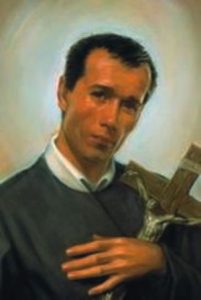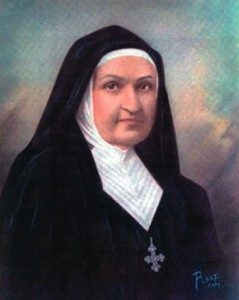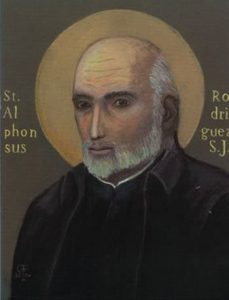October Saints
 Saint Gerard Majella (1726-1755)
Saint Gerard Majella (1726-1755)
Born in Muro, Italy, in 1726, the son of a tailor, Gerard worked for a time as a servant to a bishop. In 1745 he opened a tailor shop, but three years later he became a Redemptorist and was professed by St Alphonsus Liguori.
A mystic with incredible gifts, Gerard served as a tailor and infirmarian, becoming known for bilocation, prophecies, visions and other spiritual phenomena. He converted sinners and advised religious.
False allegations by a female accuser disrupted his life, so he was sent first to Naples and then Caposele. He died of tuberculosis on 16 October 1755.
Saint Gerard, help us to live always aware of God’s presence.
(Encyclopedia of the Saints, Matthew, Margaret & Stephen Bunson, 1998, Our Sunday Visitor Publishing, Indiana)
 Blessed Celina Chludiziska V. Borzcka (1833-1913)
Blessed Celina Chludiziska V. Borzcka (1833-1913)
Celina Chludiziska was born in Antowil, Orsza, modern day Belarus, in 1833 to a family of wealthy landowners. One of three children, she grew up in an environment of sound Catholic and patriotic traditions and was home schooled. Her interior life developed early in response to a question she posed in prayer: “What do you want me to do with my life, Lord?” She discerned a religious vocation but met opposition and at age 20, obedient to the will of her parents and the counsel of her confessor, she married Joseph Borzecki.
Deeply loved by her husband, Celina was in turn a loving and exemplary wife who shared responsibility for his estate and showed concern for the poor. She bore him four children, two of whom died in infancy. She educated her two surviving daughters, Celine and Hedwig. In 1869, Joseph suffered a stroke which left him paralysed and Celina moved the family to Vienna to give him the best possible medical treatment.
Following Joseph’s death in 1874, Celina and her daughters moved to Rome to discern her future path. Here she met the co-founder of the Resurrectionist priests, Father Peter Semenenko, who had long desired a female branch of his congregation. In 1882, Celina, Hedwig and two other women began a life in community in Rome under the spiritual direction of Father Semenenko. His sudden death in 1886 was a severe blow to the fledgling community, but Celina remained firm in her conviction that God willed it to survive and live the personal, communal and apostolic dimensions of the resurrected life.
With the help of friends, Celina opened her first afternoon school for girls in 1887. After years of trial and suffering, the Congregation of the Sisters of the Resurrection was officially founded in Rome in 1891, with Celina and Hedwig professing temporary vows. Shortly afterwards, the first house in Poland was opened, and foundations spread to Bulgaria and the United States.
Mother Celina was getting older and it was generally accepted that Hedwig would take over the Congregation. However, Hedwig died suddenly in 1906 at the age of only 43. Celina continued to lead the Congregation till her death in 1913. During her last days she often repeated to her Sisters: “Be saints.”
Blessed Celina, fill us with an ardent desire to be saints.
(Source: Internet – various)
 Saint Alphonsus Rodgriguez (1532-1617)
Saint Alphonsus Rodgriguez (1532-1617)
Alphonsus was born in Segovia, Spain, on July 25, 1532, the son of a wealthy merchant. While studying with the Jesuits at Alcala, he had to return home when his father died. In Segovia he took over the family business, married, and had a son. That son died, as did two other children and then his wife. Alphonsus sold his business and applied to the Jesuits.
His lack of education and his poor health, undermined by his austerities, notwithstanding, he was accepted as a lay brother by the Jesuits in 1571. He underwent novitiate training and was sent to Montesion College on the island of Majorca. There he laboured as a hall porter for twenty-four years.
Overlooked by some of the Jesuits in the house, Alphonsus exerted a wondrous influence on many. Not only the young students but local civic and social leaders came to his porter’s lodge for advice and direction. Obedience and penance were the hallmarks of his life, as well as his devotion to the Immaculate Conception. He experienced many spiritual consolations, and he wrote religious treatises, very simple in style but sound in doctrine. Alphonsus died after a long illness on October 31, 1617.
Saint Alphonsus, help us to attain sanctity through our everyday lives.
 Entries(RSS)
Entries(RSS)